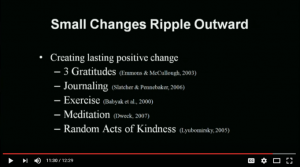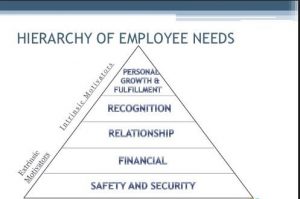No matter how secure and well-placed a brand appears to be, the danger of an online reputation crisis is always lurking. The open nature of modern day communication channels, like blogs, social networks and review sites, means that one bad customer experience or a small lapse in service standards can quickly damage a brand’s reputation.
Negative experiences shared more often
Research shows that consumers are much more likely to share negative experiences on social networks and other public platforms.

Source: Zendesk
A damaged online image can have severe effects on a brand’s value and business performance. A study by Deloitte shows that nearly 41% of companies that experience a negative reputation event reported loss of brand value and revenue.
Repairing reputation damage
Recovering from a reputation crisis requires time and effort. But it can be done with the right strategy. A prime example of this is how Toyota recovered from a huge reputation crisis in 2009-10 when it recalled almost 4 million vehicles from across the U.S because of quality issues.
Toyota’s reputation was severely damaged, but they managed to recover their brand value because of a comprehensive reputation management strategy.
Ways to fix a reputation online
There are several ways to restore a brand’s reputation and minimize the damage caused by a reputation crisis. But all of them need to be integrated in a well-knit strategy to achieve the best results.
Here’s a quick look at the steps involved in repairing a damaged online reputation.
Understanding the extent of the problem and devising a strategy
Before starting any reputation repair work, there needs to be a detailed analysis to understand the gravity of the situation and the reasons behind it.
Reputation damage can happen for a number of reasons
- Low service standards
- Miscommunication with clients
- False propaganda by competitors
- An issue going viral on social media
Whatever the reason, it needs to be identified in order to devise a proper strategy.
Identifying target keywords to rank on search engines
Over 90% of all online experiences originate from a search engine. That is why it’s crucial to carry out in-depth research and identify the right keywords to devise an SEO strategy. This includes both short and long-tail keyword research on which a brand needs to rank higher. Keyword research is the backbone of all SEO and content marketing activities.
Push down negative content and search results
Online reputation repair often means brands need to suppress negative search results and push them beyond the first two pages of Google search. In most cases, Google won’t remove a page from its search results unless it violates the search guidelines like copyright infringement issues. Therefore the only option is to suppress the negative results with SEO. This can be done by creating articles, blog posts, and reviews on targeted keywords that present a positive and glowing image of the brand.
Countering negative online reviews
Nothing is more damaging to a brand’s online reputation than negative reviews on Yelp and other review sites. Research shows that 86% of people would hesitate to buy from a brand that has negative reviews.

Source: Business2Community
To repair the reputation damage caused by negative reviews, brands must come up with different strategies to generate genuine positive reviews. It also requires a careful strategy to respond to negative reviews by apologizing (when required), highlighting the strengths of the brand and encouraging satisfied customers to share their experiences.
Developing a comprehensive content marketing strategy
A comprehensive content marketing strategy is crucial for repairing a damaged online reputation. But content marketing is much more than just publishing blog articles. It is a comprehensive marketing methodology that builds thought leadership with high-quality content and helps in developing a loyal community of brand advocates. It focuses on building an email list that can be leveraged for word-of-mouth marketing and relationship building.
Using guest blogging and influencer outreach to borrow credibility
One of the best ways to repair a broken reputation is by using guest blogging to borrow credibility from established publications. Featuring on the top news websites and industry blogs for the right reasons can boost a brand’s reputation overnight and also improve its search engine ranking. Similarly, leveraging relationships with industry influencers can also help reduce the damage caused by a reputation crisis. Both these activities, however, are time intensive and require patience. In fact, a recent study found that it takes about ten weeks for a single new inbound link to positively affect search engine rankings.
Content amplification and relationship building with social media marketing
Most of the conversations about brands and customer experiences take place on social networks like Twitter and Facebook. A successful social media marketing campaign not only repairs a broken reputation but also strengthens customer relationships.
Repairing a damaged online reputation requires a holistic approach that involves a variety of tools, techniques and platforms to communicate the positive image of a brand and suppress the negative results. However, things change rapidly. Under normal circumstances, it can only be done by a team of professional online reputation management experts who understand the impact of each strategy and proper implementation.
Business & Finance Articles on Business 2 Community(109)
Report Post






